Humming Blog |
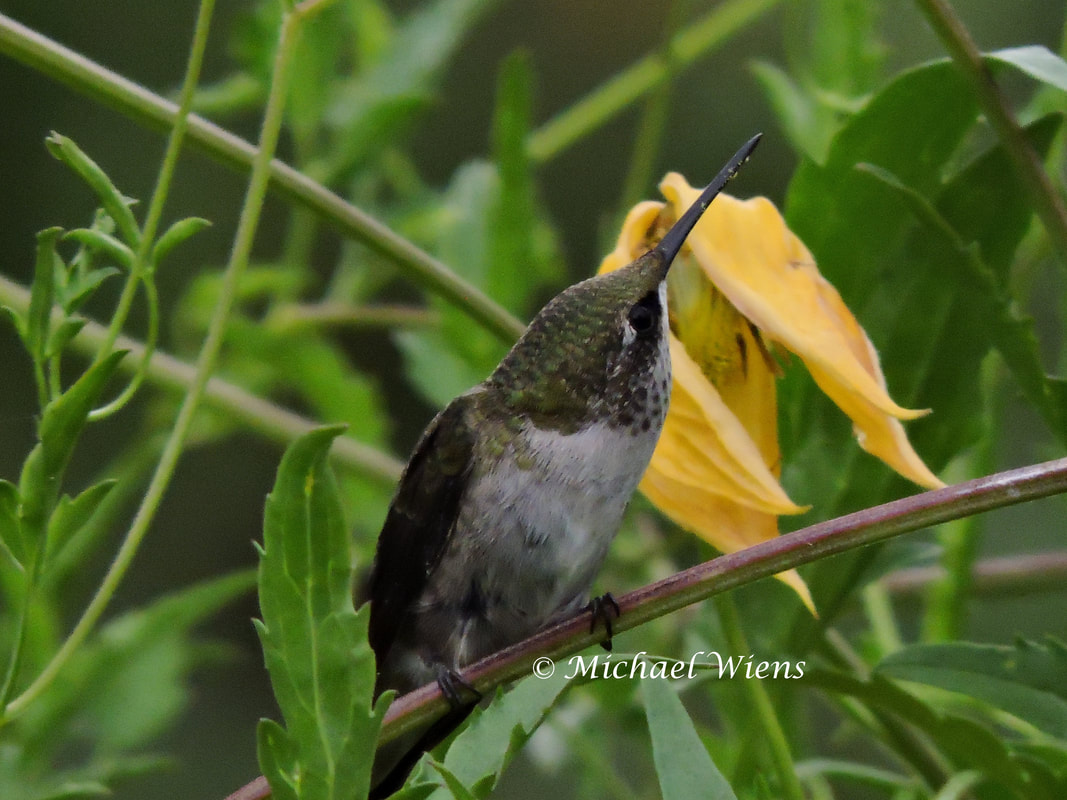 For well over a decade I have spent countless hours among the hummingbirds. Days, weeks and months have been spent watching the more detailed information of how they behave and react in every situation. I wouldn't consider myself one that knows all the different species, but one that understands a great deal about one. I don't know why I keyed in on one species when I first started, but I went full force on understanding everything I possibly could about the one, and would consider myself more of a hummingbird behaviorist. I didn't learn my information from other books, but rather invested the time right at the source. There were questions, and lots of them that I desired to know in which I couldn't find any answers. So when I decided to learn about the Ruby-throat hummingbird, I stopped at nothing to understand every detail about their behavior. What I soon discovered is that every fanned tail, head wag, squeak or head drop had a purpose. Every movement had a motive, but it was a matter of solving the mystery behind them all. After millions of sightings I don't know if there's anything unusual left to see. Of course, there will always be some information that is beyond our reach, but much of what's been revealed to us I've seen, and multiple times over. From mating to feeding and fighting, it's all become quite familiar and I can safely say I can usually read the signals. I can honestly say that I've learned a lot about one species alone. Now there are several thousand to go, but not enough time in my life to learn them all. There are other people that have also invested their lifetime learning just one species, and I fully understand the intrigue of learning just one to the fullest because I've done that, and it's incredibly rewarding, but then there are times when I wish I had spread out my time and efforts to learn a little fragment about many species. By a simple glance at this image, this young male Ruby-throat has dropped his head to indicate that he's focusing on another hummingbird above him. That dropped head and straight focus tells us he sees another hummingbird, and is intimidated by its presence. If he was the owner of that garden area and didn't want to leave his perch, he'd do a side to side head wag to show his authority over the intruder. In this case he simply sat, dropped his head and focused, hoping the other would give him a free pass. N.E. of Edmonton, Alberta, Canada. July 30, 2018
0 Comments
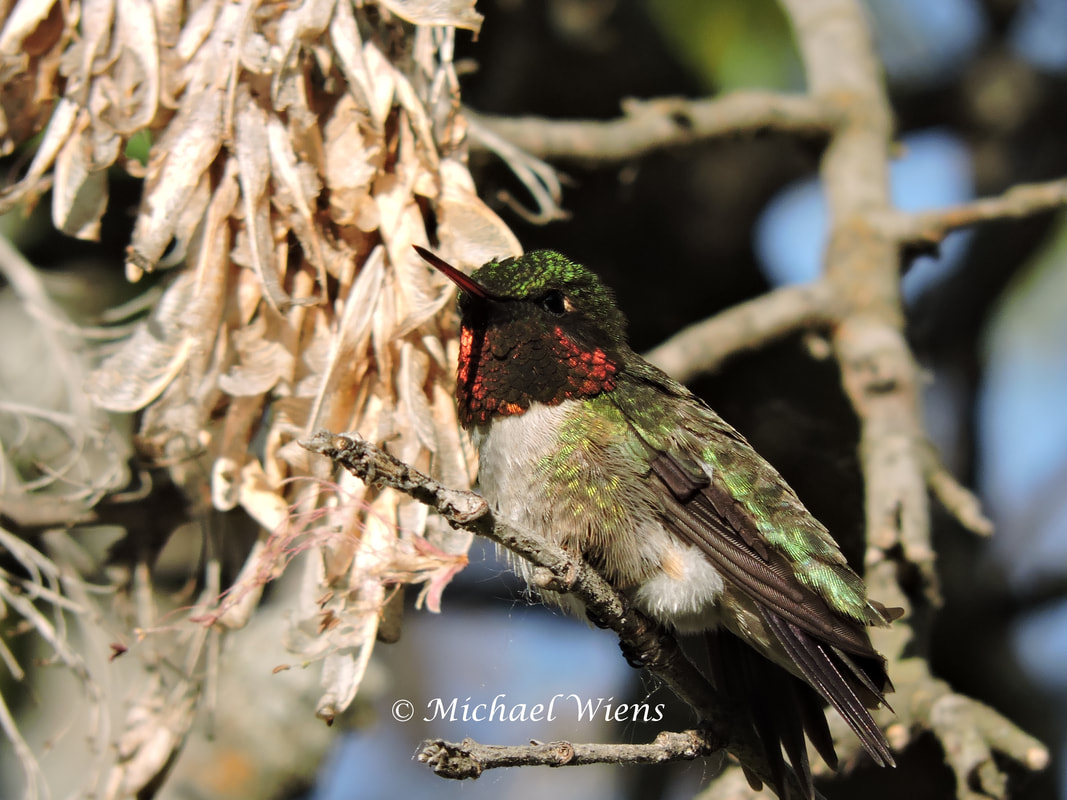 He arrived in Spring with a newly grown wardrobe, and every fiber of every feather glistened like like polished metal. The morning sun reflected brilliantly off every feature as he was handsomely dressed for mating season. He located the bathing fountain and cleaned himself up regularly to be the top bird in the garden. He put on a display with his brilliant colors. His metallic olive jacket and tuxedo contrasted nicely to his brilliant red gorget. He worked like no other bird to guard and protect his colorful kingdom. Every flower and feeder was under his authority, and no access was granted without his permission. His protection was more fierce than a watchdog, and his eyesight was more precise than doppler radar. Simply put, he was spectacular in every way. Today, he's long gone from our garden but the memories still linger, and the photos will have to be sufficient until next Spring. Adult male Ruby-throat hummingbird. N.E. of Edmonton, Alberta, Canada. May 28, 2018. 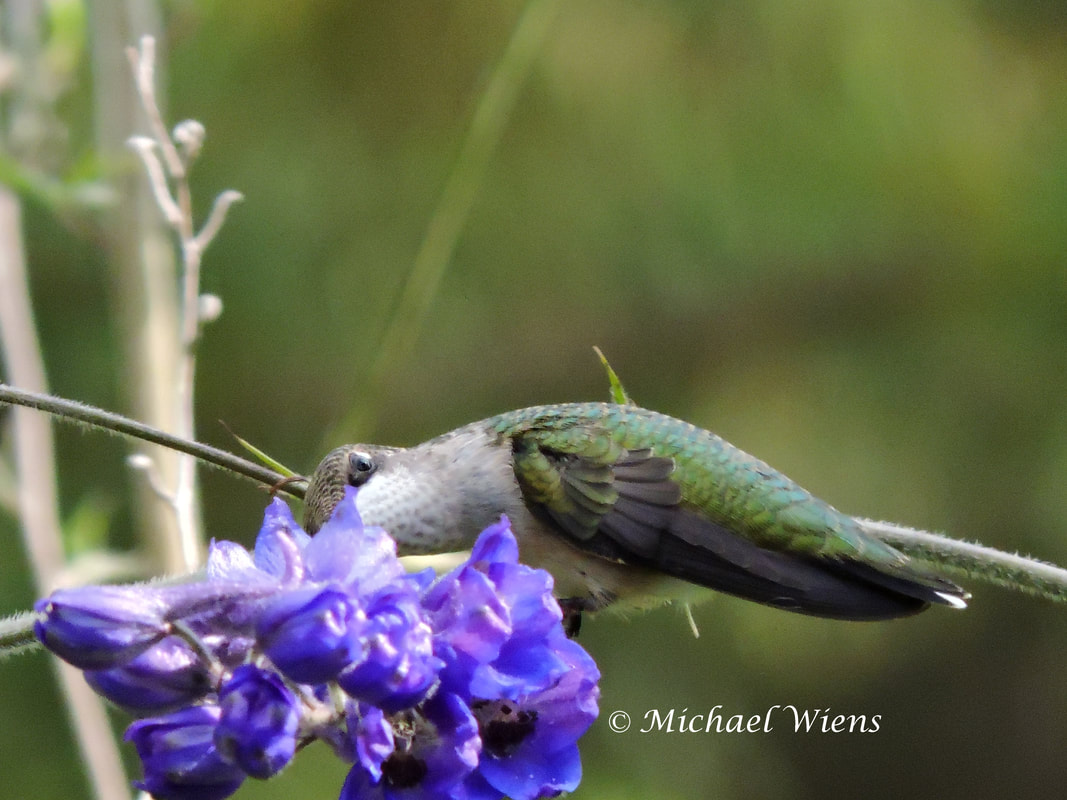 As young hummingbirds grow up in the nest, they will strengthen their wings by firmly grasping hold of their cottonlike nest or a branch very nearby, and power up their little motor. They start very young, and by the time they are ready to leave the nest they have built up an endurance to fly or at least do short bursts to another nearby branch. They soon have the ability to fly like most adult hummingbirds, but lack the special abilities to fly and feed from awkward flowers. It really doesn't take long once they've been chased or engaged in battles to build up the muscles needed for greater endurance. But within the first few days away from the nest they still lack the strength in those wing muscles to perform like an adult. They will gradually increase their feeding time, and/or learn which food sources require less energy to feed. This young Ruby-throat solved the problem after it tired out and perched on a Delphinium branch. It shuffled along the branch and just poked around in the flowers, no matter how awkwardly it had to contort it's body. Young hummingbirds can often times be identified by this behavior. They will perch in flowers and regain energy, even if just for a few seconds. They may be little but they're not lazy. It's just to regain strength, and then it's back to business. Adults will refuse awkward flowers unless they're the only ones available. Young Male Ruby-throat hummingbird. N.E. of Edmonton, Alberta, Canada. August 2, 2018 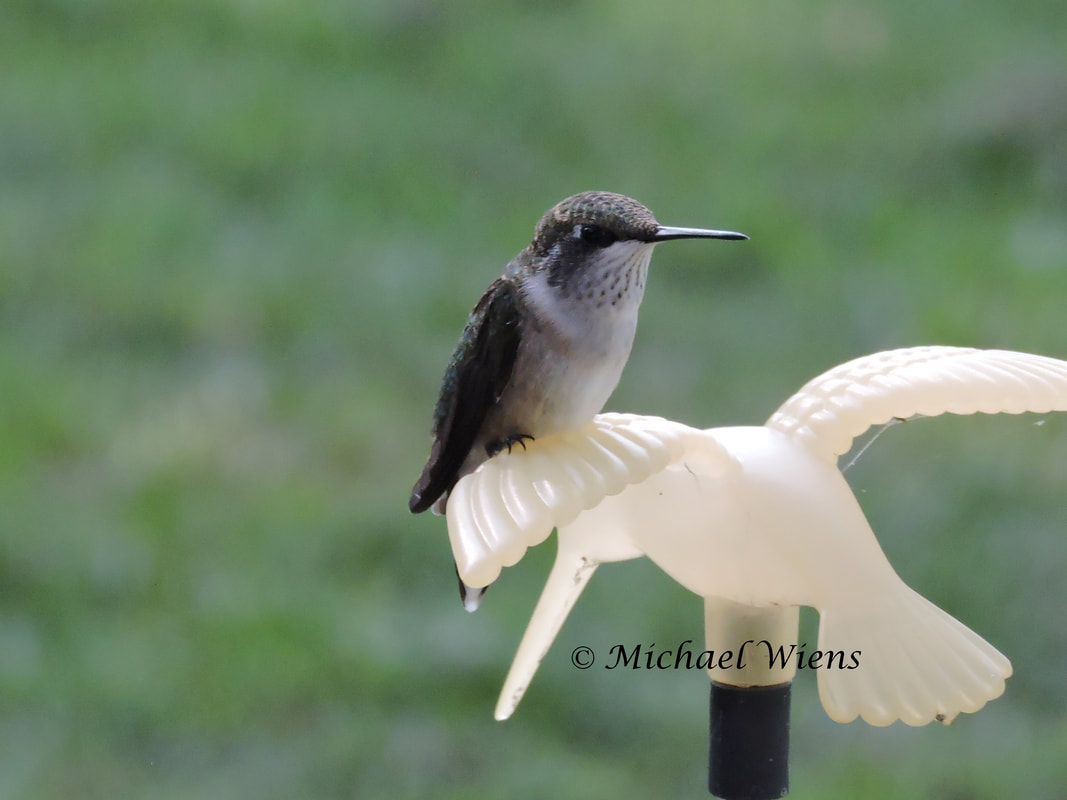 From the first hummingbird sighting of the year to the very last, not one is forgettable. I've experienced moments, as have many of you, that are impossible to erase from our minds. From the time a little hummingbird sat at our deck table and watched while my wife and I ate dinner, to the many times I've watered the plants and had hummingbirds sit on those same flowers to partake in a bit of the shower, they are permanently ingrained in me. Hours upon hours have been spent just sitting and watching their antics, and each and every one gets set permanently into memory. There are not many things that can have such an impact on us, where we remember the finest details of every circumstance of every sighting in our garden. It's not just a time passer, but a passion that keeps us returning day after day and year after year. These little creatures are precious, beautiful, and a constant reminder of what's good in this world. They are a powerful little piece of nature that can transform a bad day into a great one, and an addiction that only brings smiles and satisfaction. Each and every time we see one it provides a reminder and connection to the very one who sent them. They are truly blessings beyond belief. This young male Ruby-throat hummingbird tired out from the flower feeding and chose the closest perch to us. It sat on the hummingbird solar light as I snapped several shots and captured minutes of video. N.E. of Edmonton, Alberta, Canada. July 28, 2018. 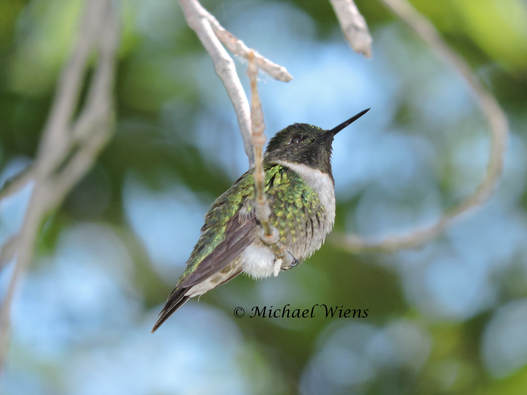 It seems like such a short time ago that the perennials were poking through the ground and I sat in the garden waiting for my first hummingbird to arrive, and today I'm watching the snow fall in my back yard. I really had a wonderful summer and I'm sad to see it go, but I remain excited about what's to come next season. Today I pieced together some images that kind of sums up the season I had from Spring to snowfall. Ziggy, my dominant Ruby-throat hummingbird showed up at his normal time and I believe he was as excited as I was when he arrived to the feeders and fountain. He took quick control of his garden, preened frequently and waited on the soon to arrive females. We planted flowers around the May long weekend in hopes they'd be thick and colorful when the young would arrive later in the season. Migrant birds soon filled the yard, sang their songs, and began nesting in and around our garden. This female American Goldfinch plucked cluster after cluster of the cotton we provided to build its nest in early July(late nesters). 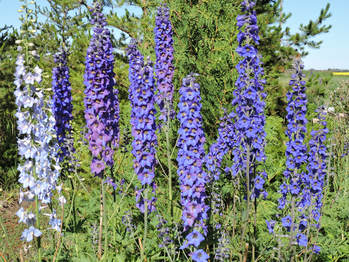 Soon after, the Delphiniums started to bloom, and the nectar rich garden started to attract young hummingbirds from all across the countryside. The chorus of songbirds in Springtime eventually produced young birds of all species that colored up the garden with their playfulness. Every species seemed to be successful in nesting. The yard filled up with young birds, both feeding from the feeders and throughout the trees as they maintained and cared for our garden. Late in the season smoke billowed in from the mountain fires. The air was thick, but the sunsets were magnificent.
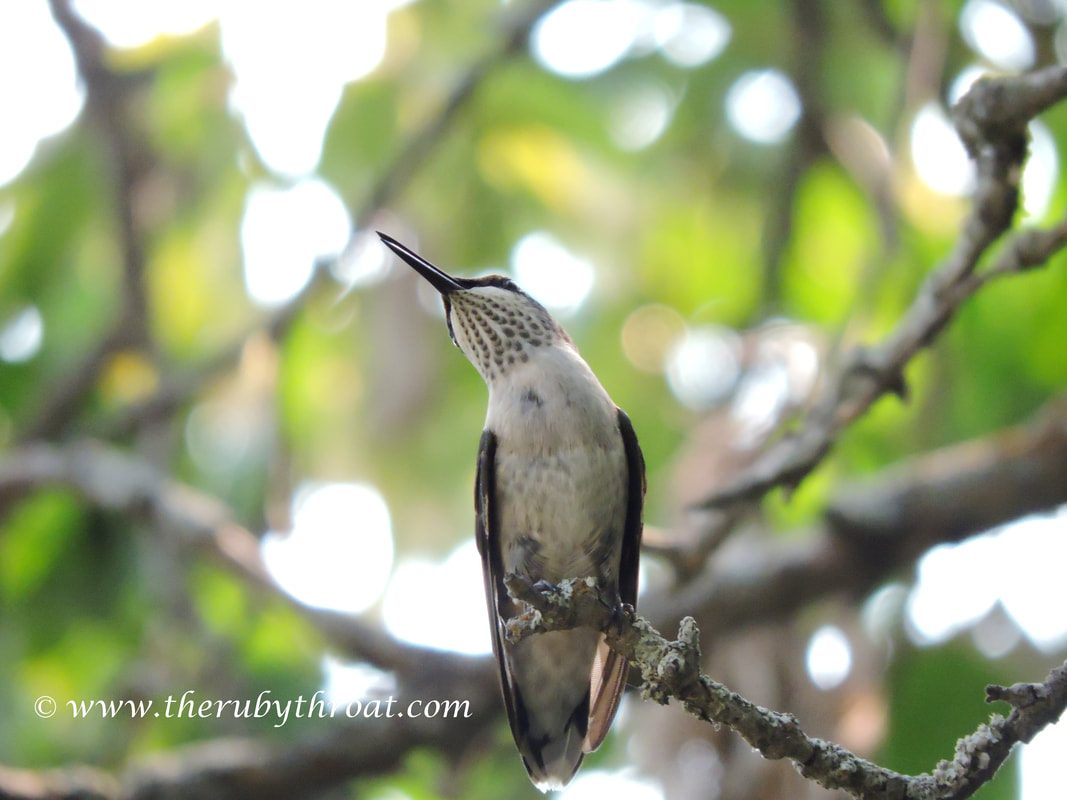 It was about the hottest day we'd had through summer, but was mid-migration for the hummingbirds. The fighting and chasing was frantic throughout the garden. One migrant showed up and gave me a few good opportunities to capture his advanced maturity. His throat was evident of a male, but more so than we usually see from any of the young before they head south. Sometimes we get a young male with a freckle or one dark feather that reflects one spot of red, but this one had a full throat of incoming dark feathers. By the time he reaches the gardens of my friends in the south he'll have a patchy red throat, and by next Spring he'll be hard to separate from all the other males dressed with a full red gorget. He chased in the hot temperatures and then sat and panted like a dog. Here he sits with his mouth open, not because he was angry at another bird, but desperately tried to cool himself off before joining into the chase again. Juvenile male Ruby-throat hummingbird. N.E. of Edmonton, Alberta, Canada. Mid-August 2018 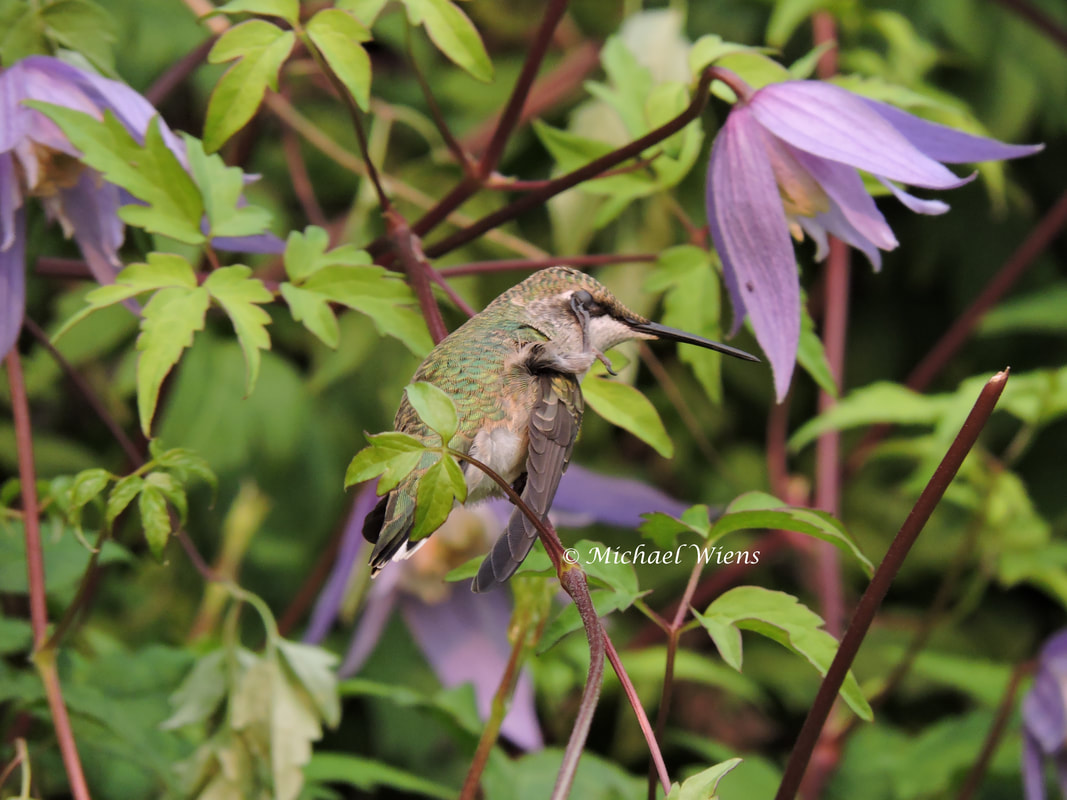 There comes a point when you just have so many pictures that you try to catch hummingbirds in awkward or unusual positions. There's only so many photos you can take before many start looking like the others. So while these youngsters just sat in the plants, I tried to capture them every time they would preen. Even though hummingbirds weren't built to walk, they do have strength in their legs. They use their legs in combat, shuffling along branches or around a feeder, and holding onto their perch when wild winds toss them around. Those are mighty little muscles that grip for hours through the most violent storms. Just imagine while the branches are being tossed about, they can grip tightly and balance their body. In comparison to other birds or animals, they have legs built for power. This was all planned out in the design of nature, for their survival. Larger birds with a greater mass are not affected as much when standing in the wind, but the smaller you go with birds and even insects, the mightier their legs and wings are. Their legs may look tiny and fragile, but in relation to their body, they have powerful little pipes. Here is a series of pic's that I took of young Ruby-throat hummingbirds while they cleaned and scratched. August 2018. N.E. of Edmonton, Alberta, Canada. 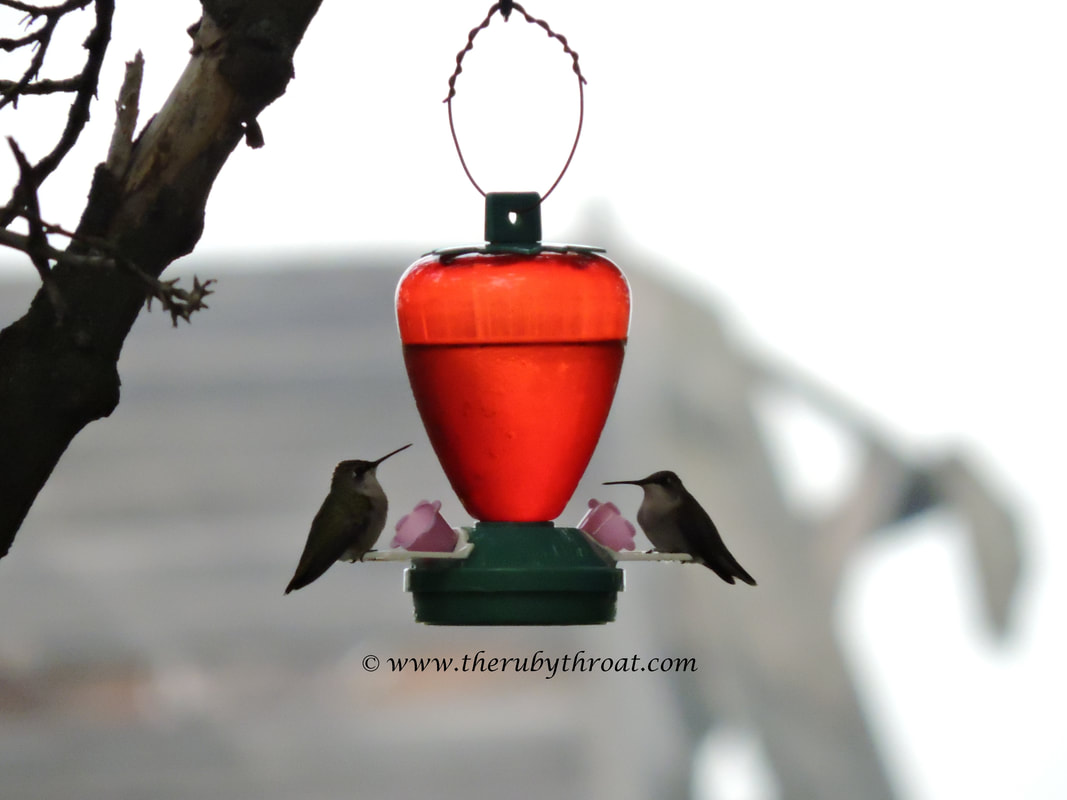 Here's a common question that's asked, and there is a simple explanation. First of all I want to exclude regions that have many hummingbirds for this reason - When the population is much bigger, it becomes impossible for one bird to chase away all other hummingbirds. They still remain cranky and continue to squeak out a warning, but when there are multiple birds all doing the same thing, they just try and work their way into a feeding opportunity. For the rest of the population that has far fewer birds, something different occurs. Hummingbirds are seriously possessive of their food. Once they've fed from a feeder, and in their own mind determined it's now theirs, they start to protect that source. If they catch another bird feeding at their food source, they quickly fight to protect it. As the number of birds increase you sometimes get situations where a few birds start believing they each own that feeder, and so they fight and chase each other around the yard. Then you get the situation where certain birds are pushed out of feeders. Each feeder has an owner already, and the rest have to sneak in for feeding opportunities. Occasionally you'll get a sneaker that finds an open feeder while the owner is away or sleeping on the job. That sneaker isn't in aggression mode. It just wants to grab a feed as quickly as it can without getting noticed. Finally, you get a second sneaker that arrives at a feeder with another sneaker already there. Neither wants any trouble, and they are just hoping the other won't be too upset with sharing. Neither one is in aggression mode, because both of them each know they are the trespasser and neither one owns that feeder. Sometimes you get one peaking around at the other just to make sure they're in agreement, but then it's back to feeding. There is a pecking order within the hummingbird world. Some birds just know they are at the top. Ziggy(my dominant male) for example, he doesn't question whether he can take on another bird, he knows it. Over time, and several combats later, the toughest will take over, and the others simply understand that. If sharing means they get in a feed, then they'll accept that. When the young start to discover and practice scare tactics, they will fly up into the face of another, and flare the tail and wings to try and intimidate. Sometimes it's effective and they realize the power they contain, while other times they realize it was a really big mistake while being chased around the garden a dozen times. Two non-confrontational Ruby-throat hummingbirds just wanting a drink N.E. of Edmonton, Alberta, Canada. Mid-August 2018 If you were to see these 4 hummingbirds at your feeders, would you dare to think that one is out of its territory, or would you just assume they are all the same species, or even the same bird?
Birds typically stay within their common territory but sometimes you get a wanderer, and now that I've stated that one is not like the others, you're probably trying to find the difference. They are very similar, but when you start to look at the finer details, you'll probably notice a freckle on the throat of one bird. If you noticed that and thought you found the bird out of place, then you'd be wrong. It's also a Ruby-throat. It can be very difficult to separate the species, especially the young or the females. Sometimes it comes down to recognizing the behavior to know the difference, and that was my case. They're all captured at a distance of 40 - 100 feet away from myself, so I thought nothing of it, but then one started acting a bit different from the others. One got my attention, and then I started to watch more carefully. The subtle differences were enough for me to question even the slightest possibility of a stranger among us. I grabbed my binoculars and also noticed a slight variation in color from the rest. Ruby-throats are olive colored on the back, but light gray on the front, except for the adult males which have the faint olive tuxedo, with the whitish/grey shirt underneath it. I've seen the odd young Ruby that shows a buff coloring around the flank area, but that's about it. The stranger in our yard looked like the other Rubies, but upon a closer look I noticed a slight buff coloring on the front shoulder down to the flank. This is where I noticed something was up. I started to watch that particular bird a whole lot more carefully. Then the behavior seemed far more dramatic from the others. I've seen enough Rubies to know what common behavior is, but this one was different in sound, appearance and behavior. It flew over our heads before noticing another bird at a feeder below. It did an intimidation drop out of the sky like no Ruby I'd ever seen, and the sound brought the biggest smile to my face. It was a Calliope! Hundreds of miles from its territory and it ended up in my garden. You couldn't imagine my excitement! I managed several more photos as close as I could get before it also decided to leave for good. It headed east, yes east! This means many other gardens will have this Calliope visiting from far outside its territory, but will anyone notice? I really believe the rare sightings could be even more common if we could all more easily identify the different species, including myself. Fortunately for myself, this young male stuck around for several hours before I finally clued in. For those who are still wondering which bird is different from the rest...it's the first one. N.E. of Edmonton, Alberta, Canada. Mid August 2018 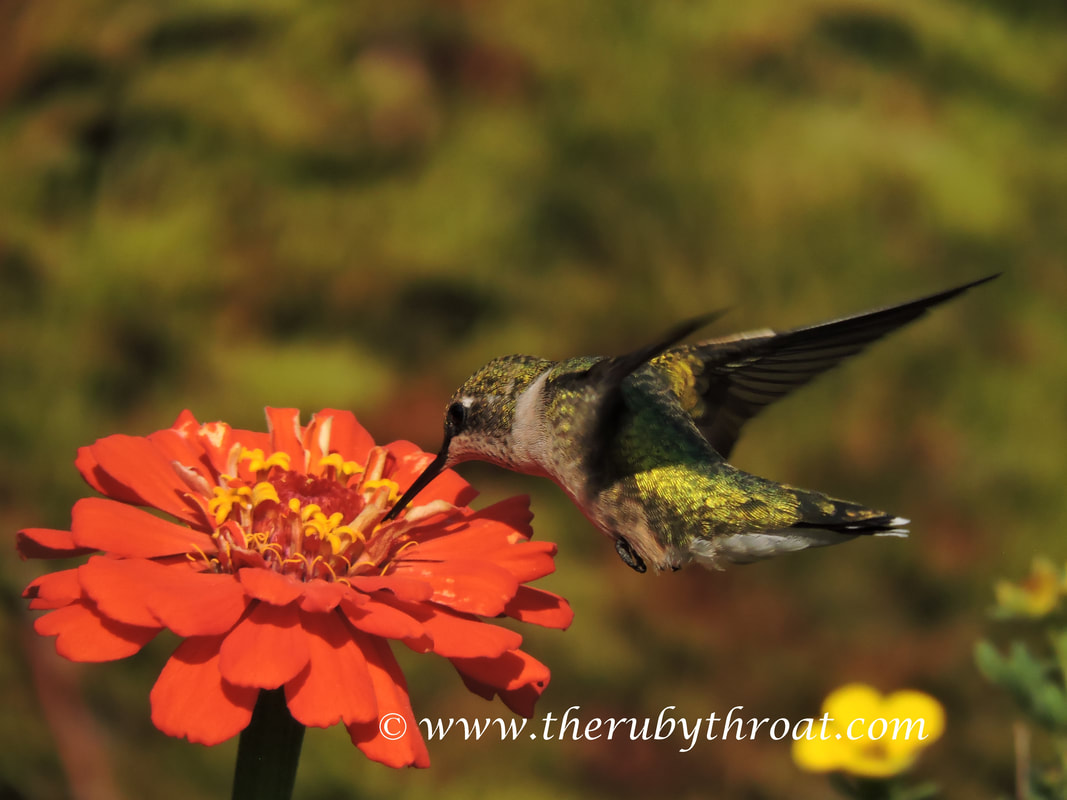 For those who don't take pictures, but admire others for their hummingbird shots, you couldn't imagine the amount of time that goes into setting up, sitting motionless, and snapping thousands of shots, only to come out with a handful of beauties by the end of the season. It's incredibly time consuming, and the muscles in your hands, arms, and back can certainly tell you how difficult it is. Blurry eyes after hours of pic's and headaches from such intense focus and attention can give you incredible fatigue, but please don't feel sorry for us. There is nowhere we'd rather be, and nothing we'd rather be doing. Those sore muscles are nothing compared to the rewards we get when we capture the perfect shots. After hours, days, and even weeks of capturing hummers in the garden, I ended up with about 50 shots that capture the color, position, background, crispness and detail better than the rest. This young male Ruby-throat allowed me about 50 decent shots, but this particular one really got my attention. Zinnias are a really good target flower for young hummingbirds. They are attracted to the large bright flowers, and are easy to feed from. I would consider these one my top 5 favorites for attracting young hummingbirds. N.E. of Edmonton, Alberta, Canada. Early August, 2018 |
Archives
June 2024
Categories
All
|
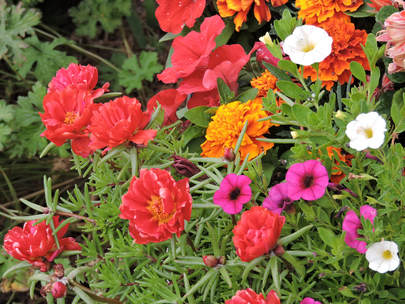
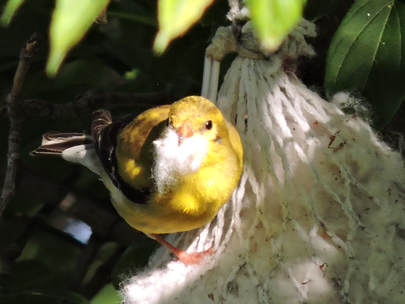
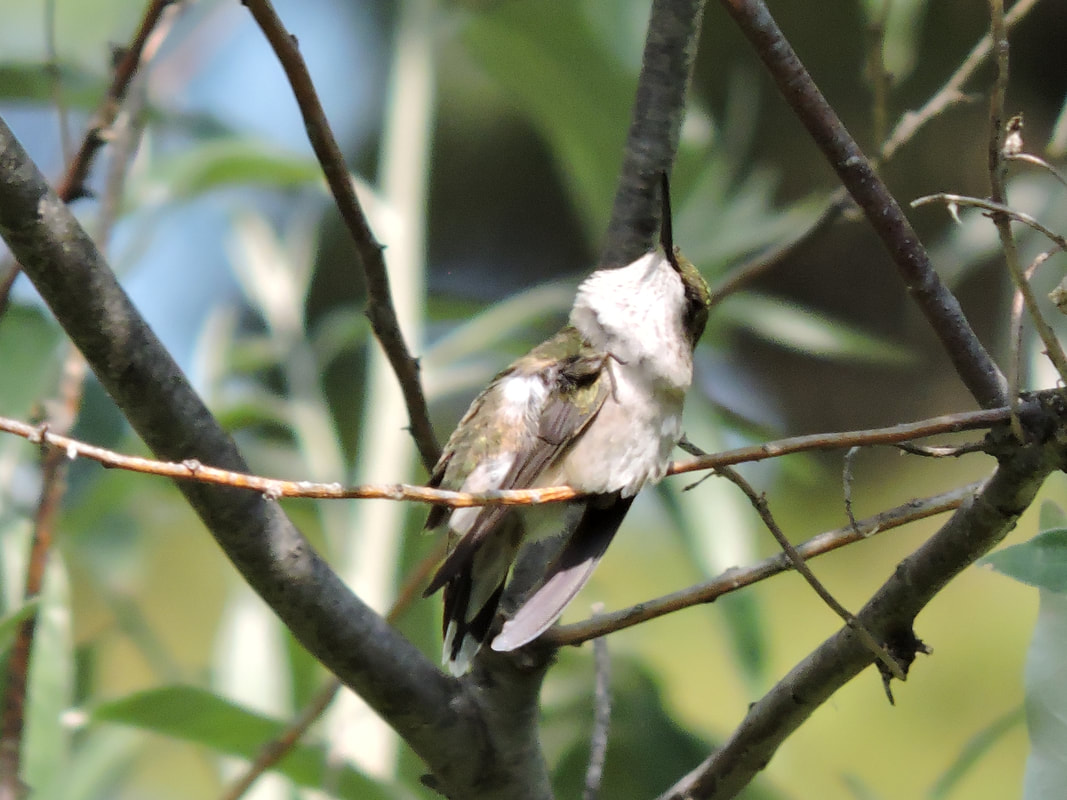

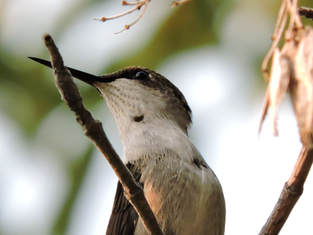
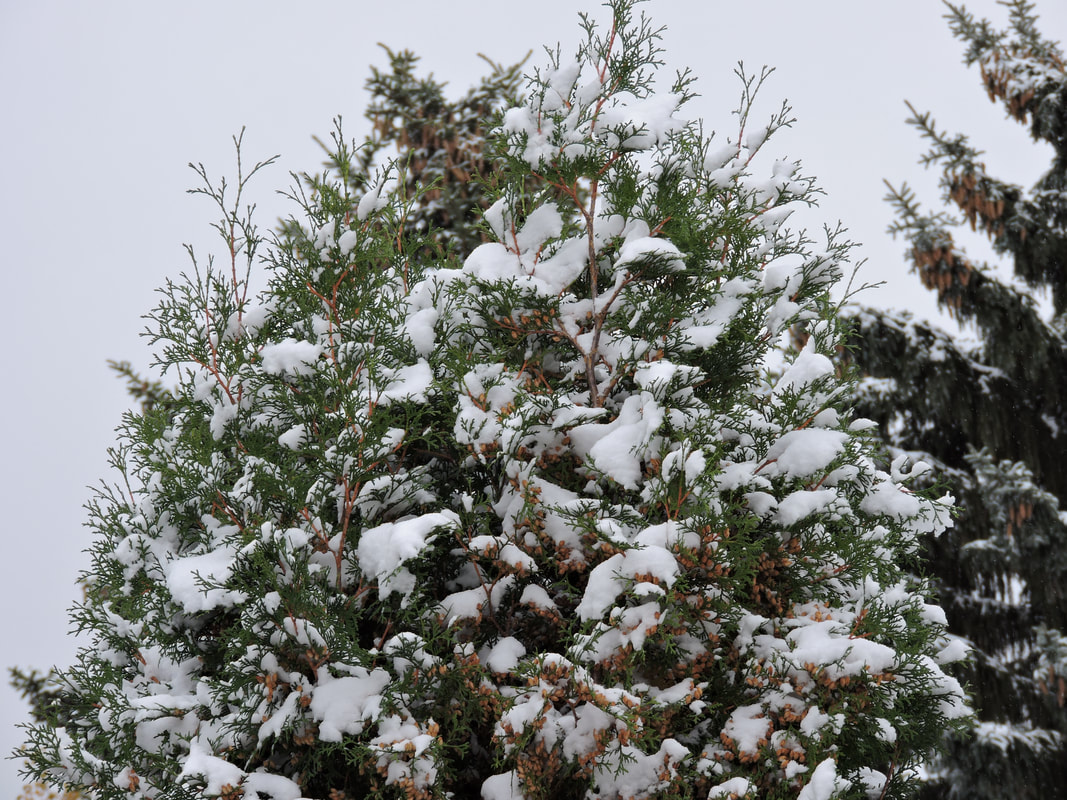

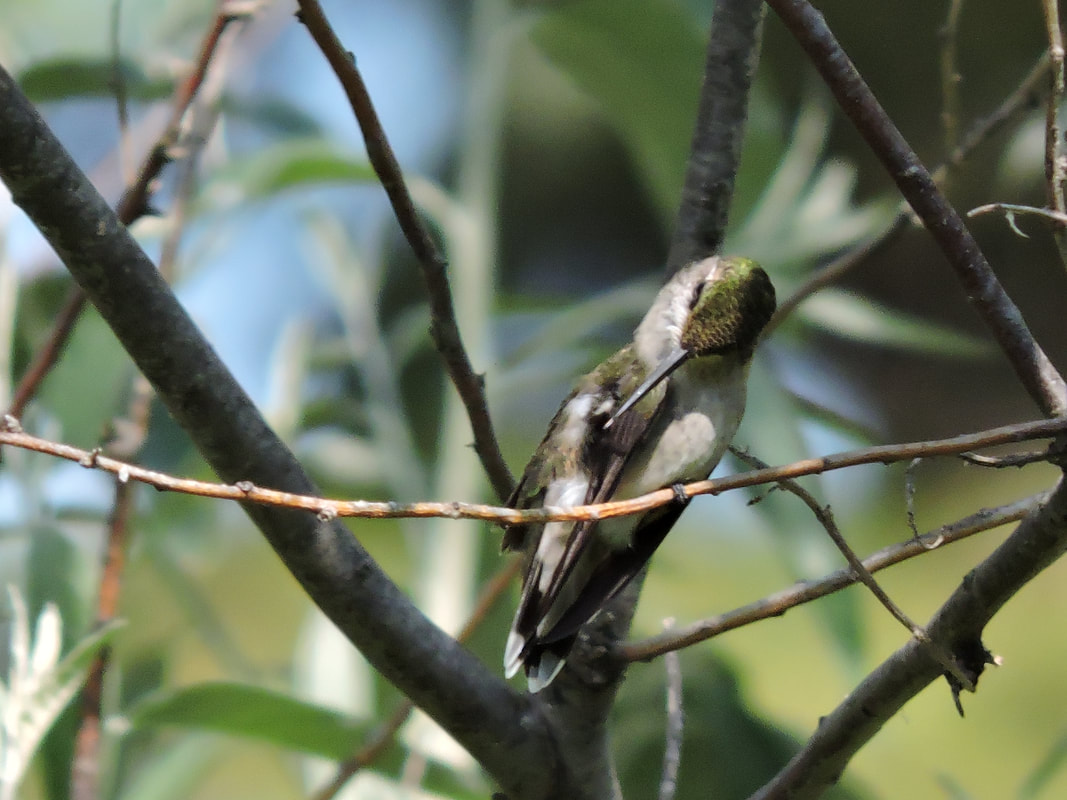
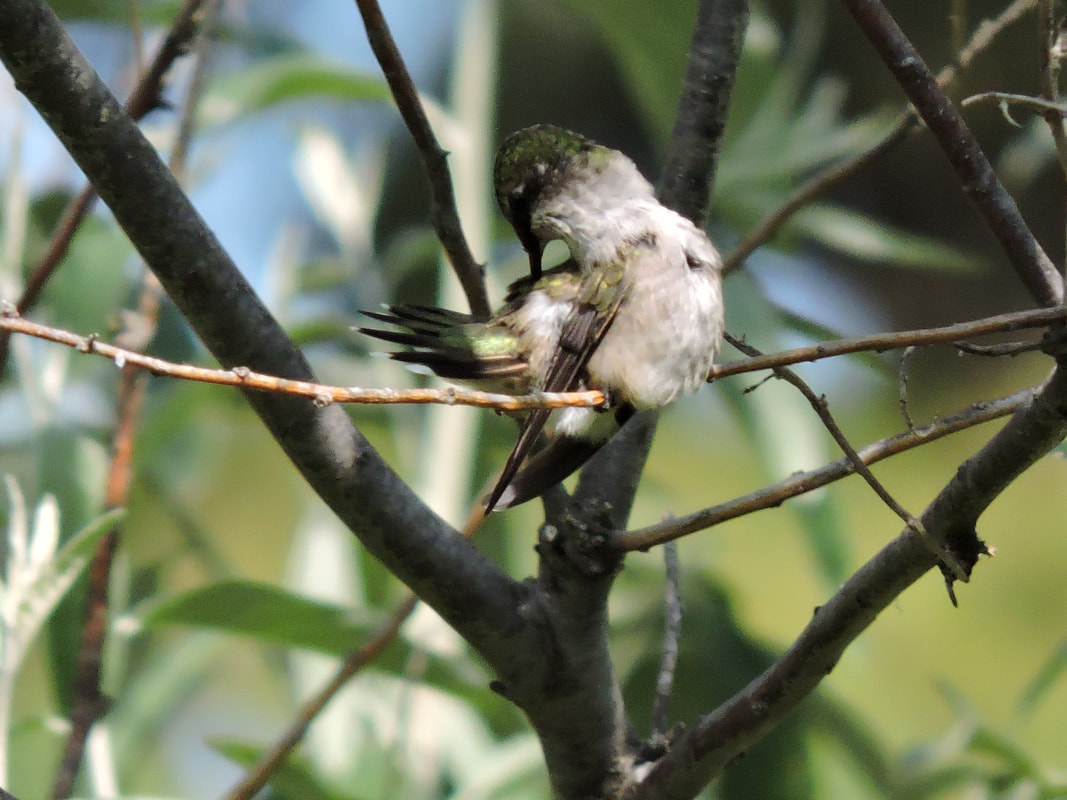
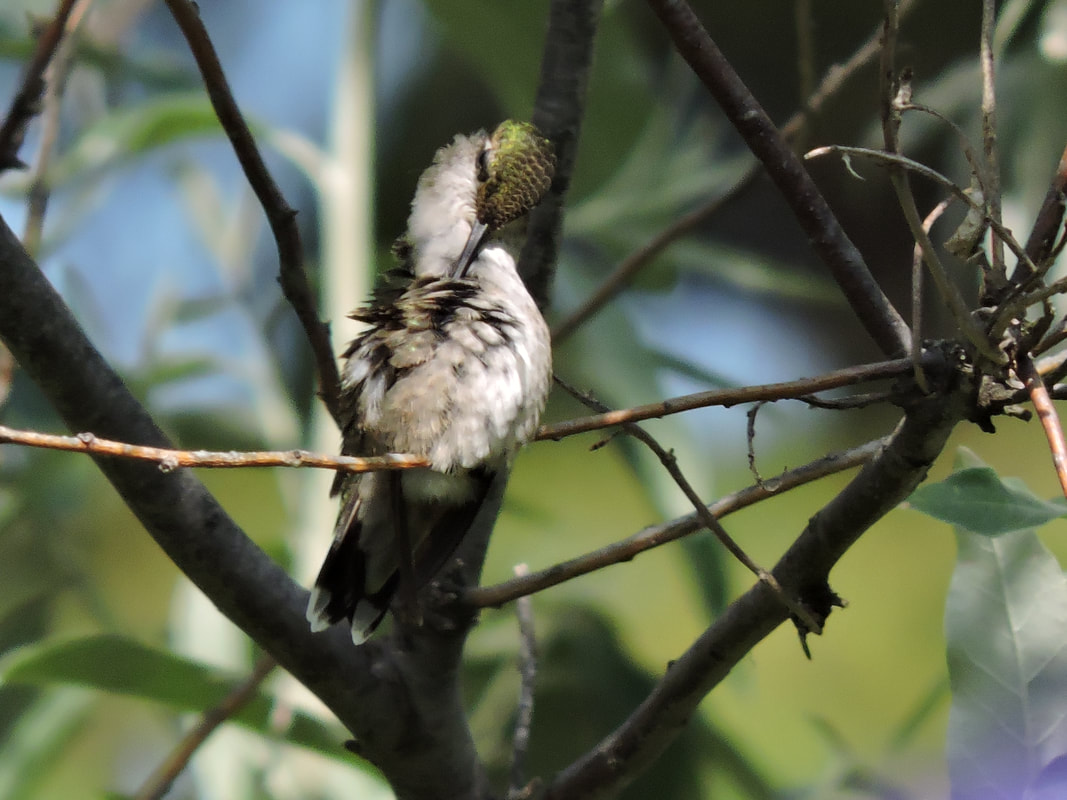
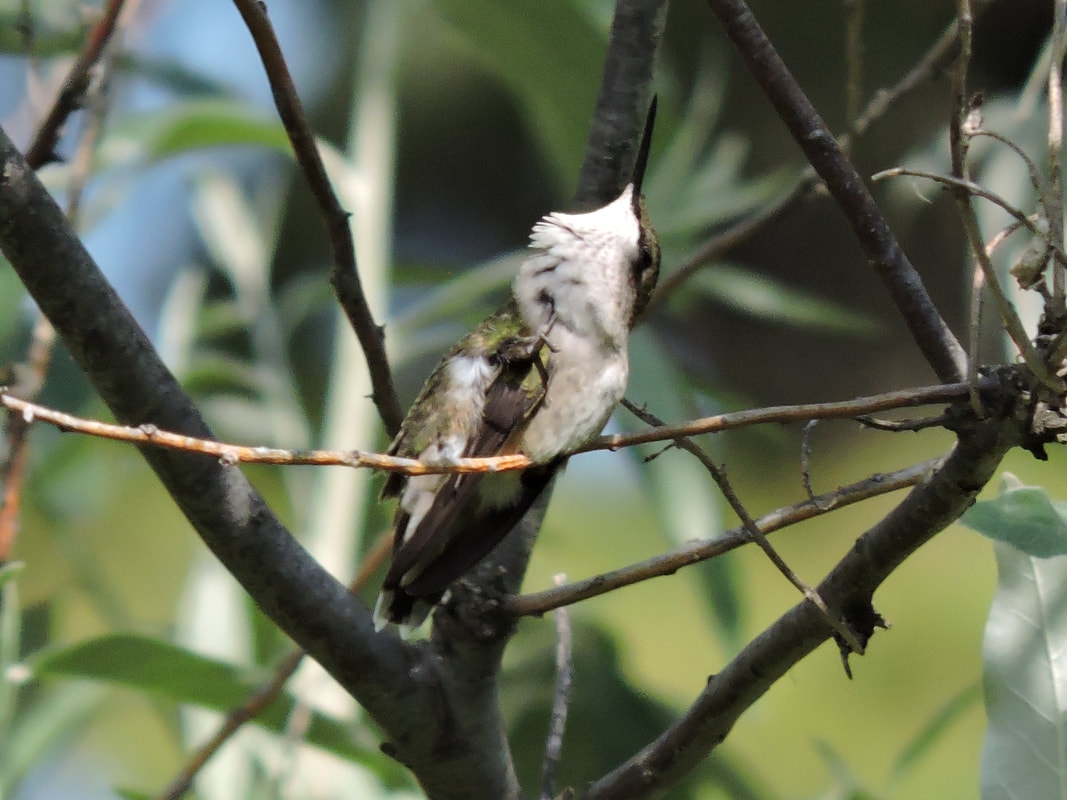
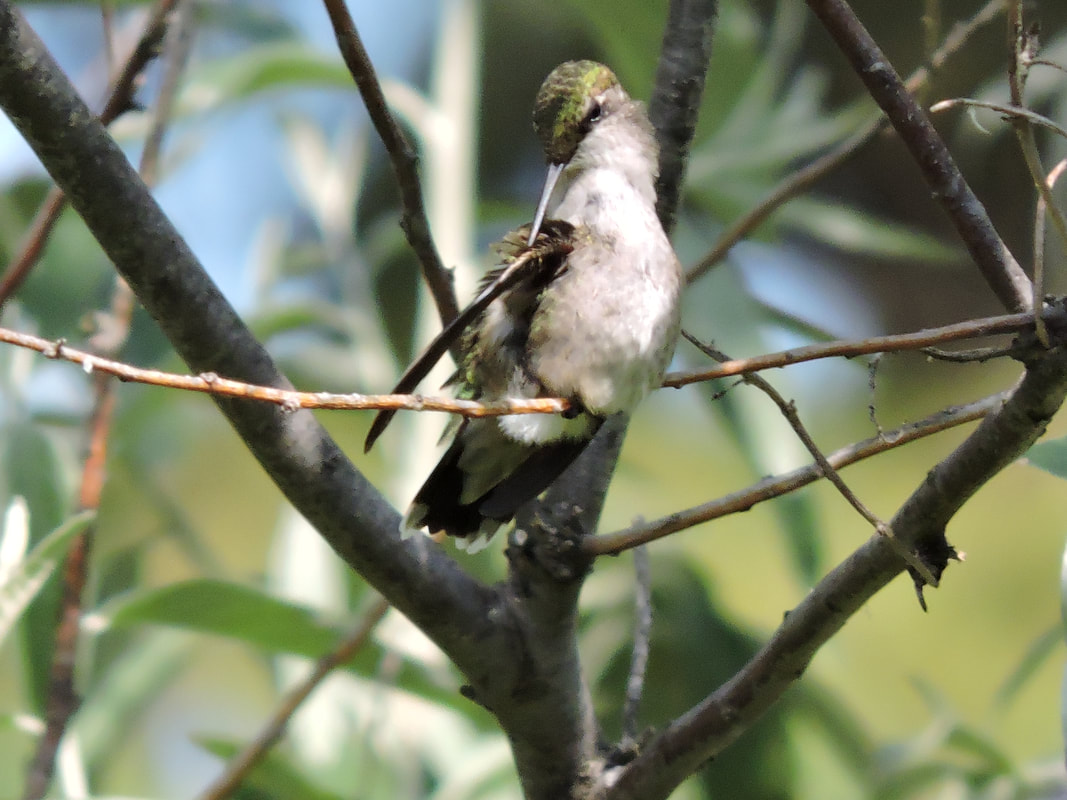
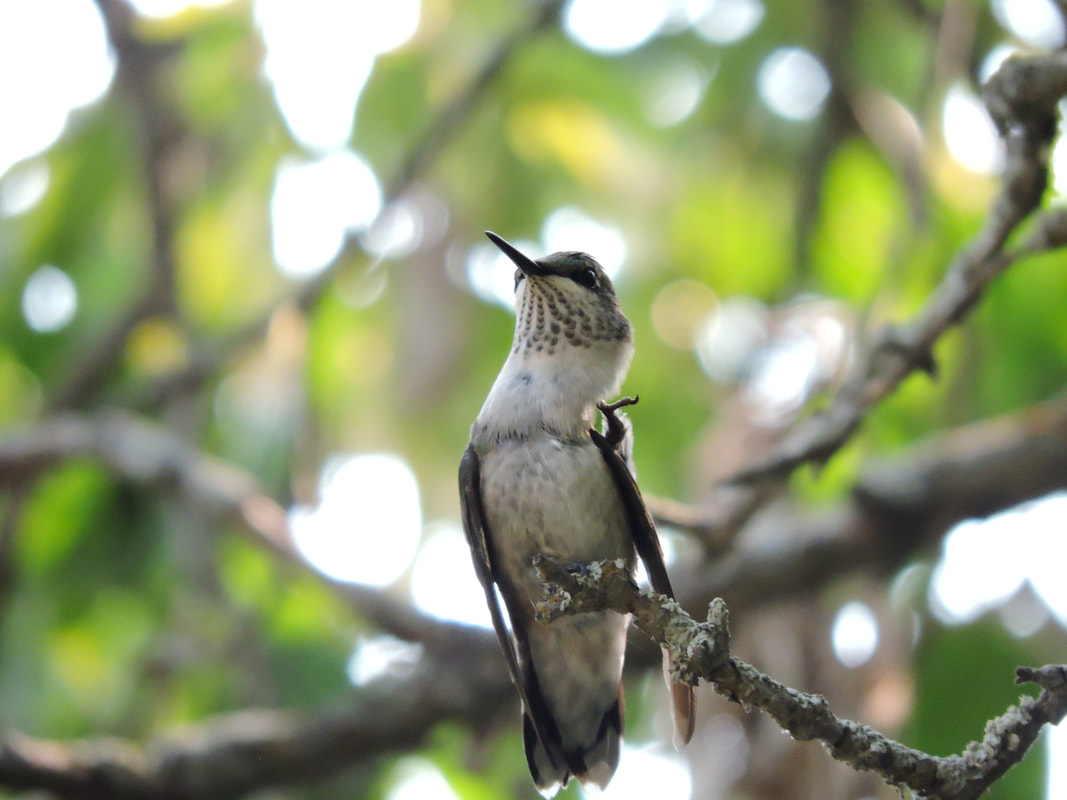
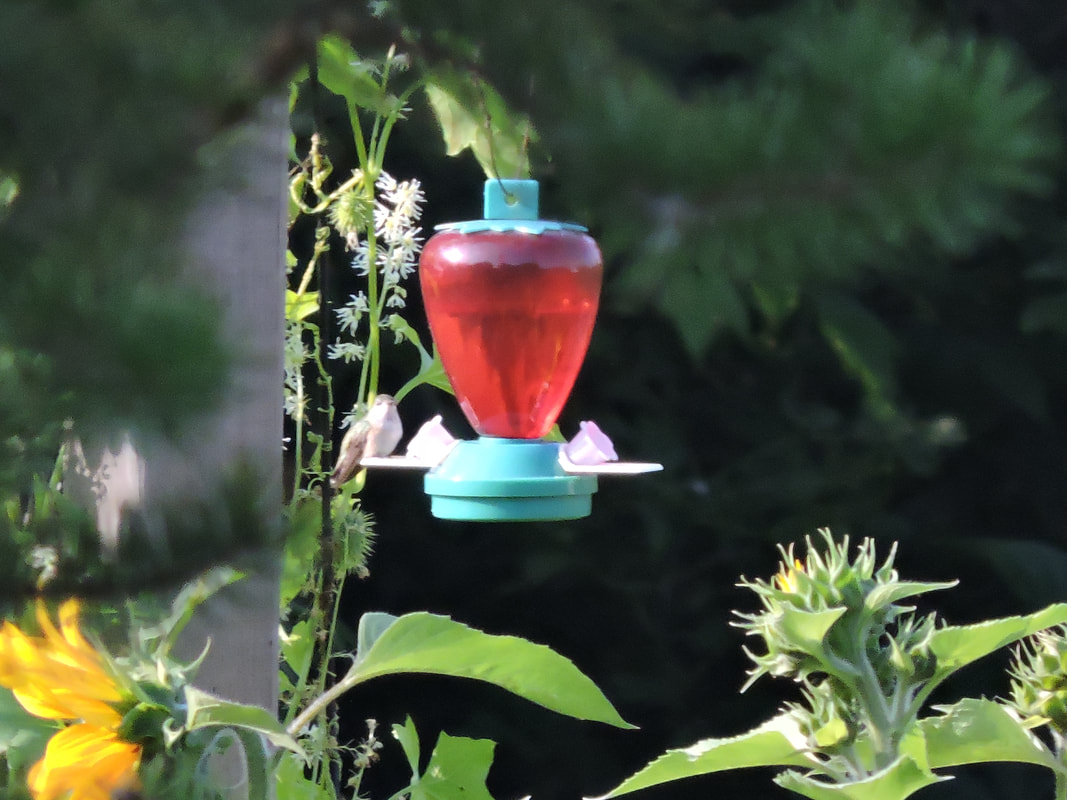
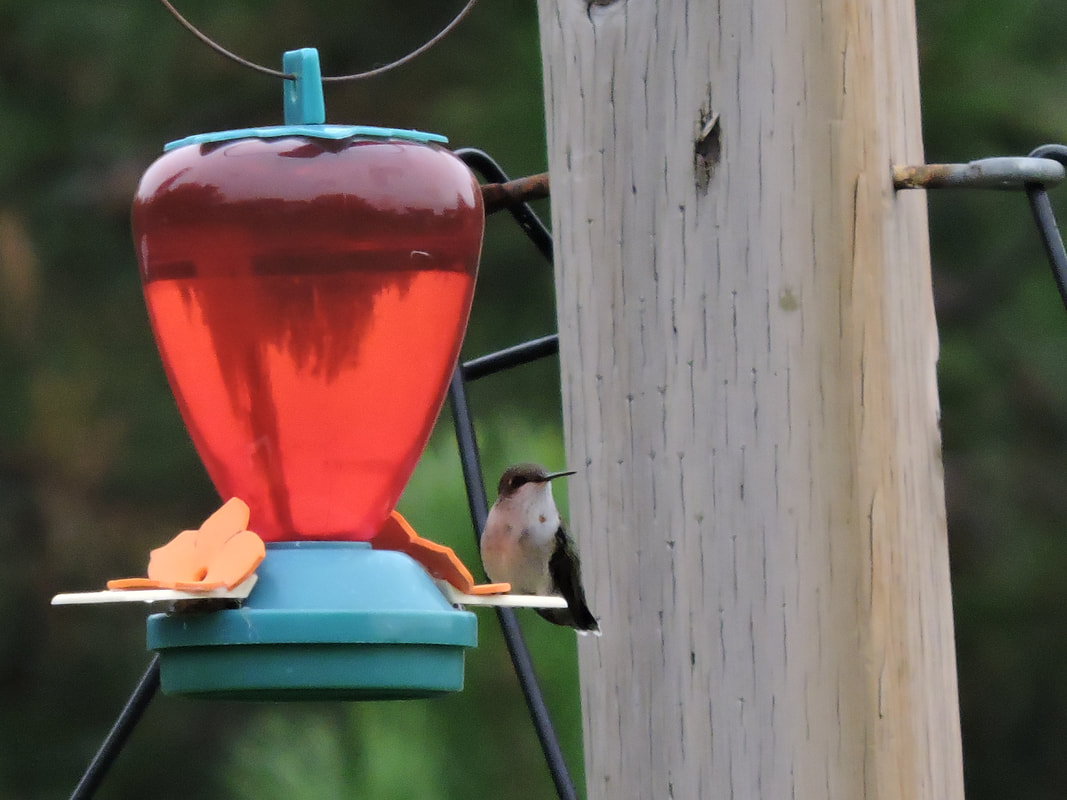
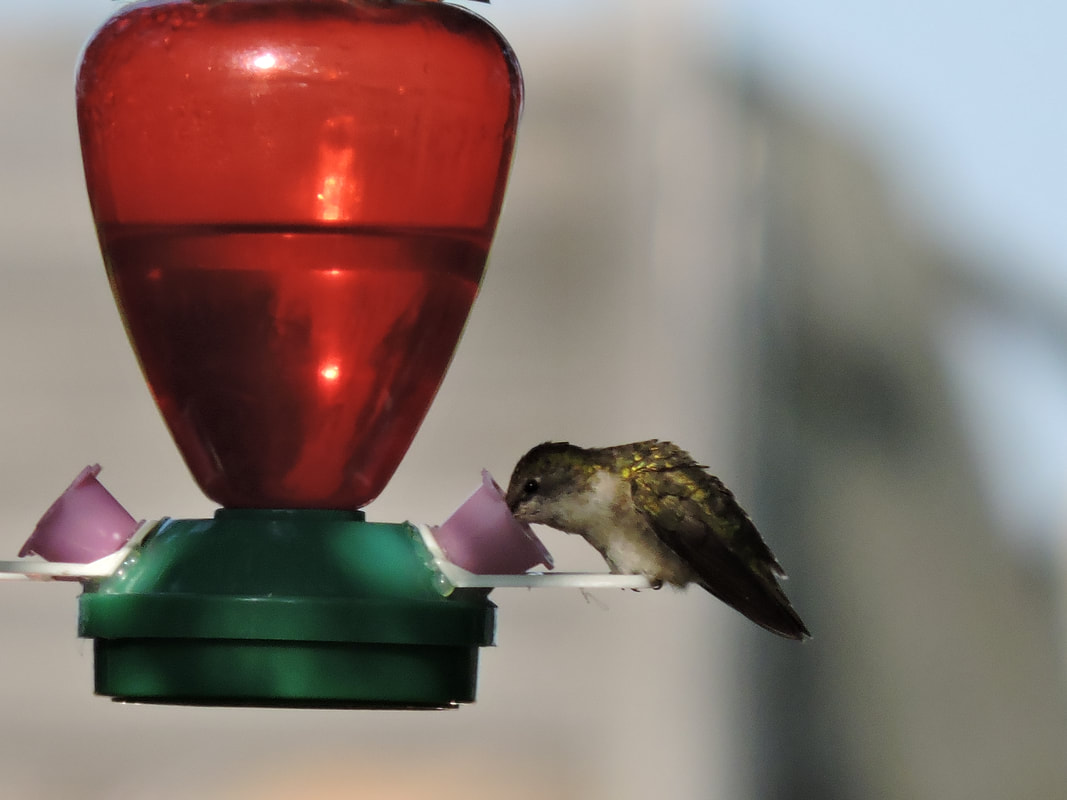
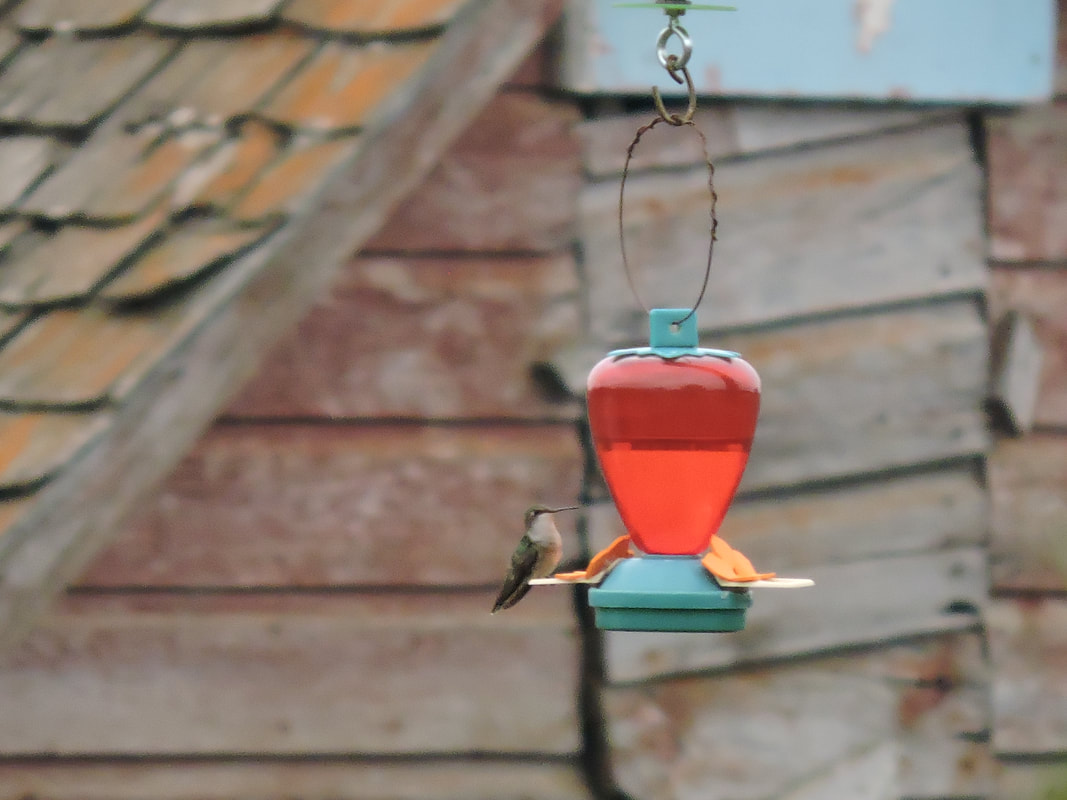
 RSS Feed
RSS Feed
